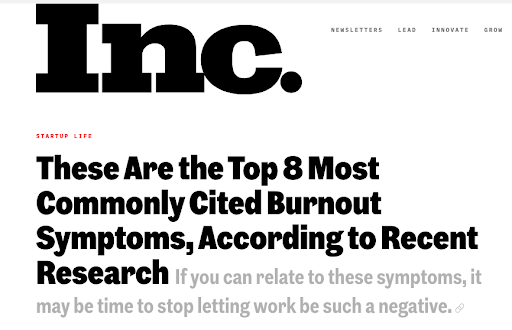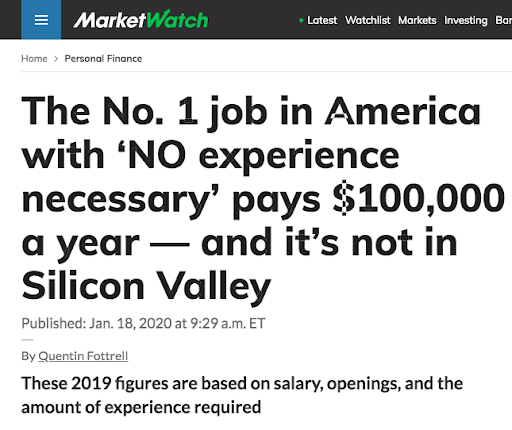30-second summary:
- Emotion is a pivotal component of great content.
- If you have an opportunity to create emotional content, you’re much more likely to be successful.
- A new Fractl study reveals what emotions are most common in highly-linked-to content in each industry.
- You should explore what emotions are already prevalent in your industry to gain new ideas and understand what already resonates with your audience.
- When pitching content to writers, highlight the key emotional takeaways so reporters glean them quickly.
Yes, content should be useful. In fact, nine times out of 10, it must be useful in order to make an impact. But emotion is pivotal too. Emotion can form a sense of connection between a reader and a story — between a reader and their place in the world. For this reason, emotion can sometimes carry an entire piece of content because it taps into our common humanity. How do you hit the right chords with emotional content? Here are tips on how to do that.
Sure, it sounds corny. But that doesn’t make it any less true. Emotion matters, and if you have an opportunity to create emotional content, you’re much more likely to be successful.
1. Understand which emotions resonate in your industry
Before jumping into content creation, it’s good to understand what works well in your particular niche. What content that’s been created has performed well, and why? What emotions are present in some of the most talked-about content?
In a recent Fractl study, we looked at more than 5,000 pieces of content that earned at least 25 backlinks. Then we explored which Facebook reactions were more prevalent in each content niche.

This breakdown provides a great overlook of what emotions are already prominent in your niche’s content. Look at how anger appears in sex/relationship stories while love appears often in travel stories.
Why do you think these emotions may be associated with your niche? What can you cover that hasn’t already been covered that taps into why people are upset or in awe?
To gain more industry insight, before creating content, I would:
- Pull out my customer personas. What emotions are tied to what they worry about? Struggle with? Seek out? Can I apply these emotions to content?
- Read my target publications’ content. Which articles are on the front page? Which got the most engagement? What emotions are featured in them?
- Check BuzzSumo to see what content is most engaged within my industry. Not only will this highlight certain emotions that are prevalent, but it’ll also let you know if an idea you have has already been covered in depth.
Take a look at some of the highly-engaged-with stories that appear on the BuzzSumo content search for “job interview”.

Just from this snapshot of stories, you can see multiple emotions: humor/laughter regarding funny anecdotes, fear that the job application process might be totally changed by AI, happiness at the kind gesture from Lyft, and contempt at discrimination taking place at interviews.
Perhaps honing in on one of these emotions can spark an idea. What else might people be afraid of regarding the job application process? What else are they angry about? Happy about?
When all else fails, capitalize on the feeling of surprise. Our research on viral emotions revealed that the most common emotion in viral images is “surprise”. People like to learn something new that’s unexpected. If your data reveals data points like this, make sure to highlight it in the project.
2. Identify which emotions to focus on in your content
When trying to come up with content ideas, ask yourself: What emotions are tied to this concept? What are the different circumstances people can encounter, and how do those circumstances make them feel?
For example, for our client The Interview Guys (a job interview advice portal), we considered the variety of issues that can come up related to work. One such idea that hadn’t been fully addressed, in our opinion, was burnout.
Burnout in and of itself is an emotional topic. It’s associated with stress, anxiety, and exhaustion. After surveying people about burnout, we earned coverage on Inc., Yahoo Finance AU, and International Business Times.

But not every idea will be as emotionally straightforward. Perhaps you have an instinct that analyzing a certain data set would yield interesting results.
Push yourself to identify
What would make those results compelling? What insights might this data help us gain, and what emotions are involved with these insights?
For example, in a separate project for the same client, we thought about identifying jobs that pay well that don’t require years of education. What we’d end up with is a list of jobs and what they’d pay.
On the surface, this may not seem too emotional. But let’s consider the layers involved here:
- Less schooling means less stress, less debt, and less pressure.
- The potential to make a good salary provides hope.
- Struggling to find a job with little to no experience can give someone a lot of financial and emotional anxiety.
- Why would people care about this information in the first place? They’re looking to switch jobs. For whatever reason, they’re dissatisfied.
So you have stress, anxiety, hope, and dissatisfaction as some examples of emotions tied into this list of jobs. It’s not just a list anymore, is it?
Call upon these feelings every time you make a decision about the project. It’ll help keep you focused on the real soul of the story.
3. Pitch the emotional angles
When you can identify these emotional elements, you’ll also know how to better promote the idea.
We pitched the high-paying-jobs project to publications. Take a look at some of the coverage.

Source: Reader’s Digest
Reader’s Digest opens with the dilemma of not being able to find a job because you don’t have enough job experience yet. They’re tapping into a common, shared frustration people have, and by starting the article this way, they’re immediately putting the reader in a frame of mind to connect emotionally with the content.

Source: MarketWatch
This headline taps into the hope angle; they’re essentially saying, you don’t have to be the typical tech person to make a lot of money with little experience.
When you pitch writers, make sure to include the emotional data points and angles prominently. Include bullets of the most impactful takeaways so the reporter doesn’t have to dig through the data to understand why it matters and why their audience will care.
And don’t do the same thing for every publisher. Consider their particular audiences and what they care about, and then tailor your data points to speak to those readers.
Conclusion
Data is only as powerful as the story it tells, and all of the best human stories are packed with emotion. In every stage of your content creation process, from ideation to design to promotion, keep the emotional components in mind and center them.
Amanda Milligan is the Marketing Director at Fractl, a prominent growth marketing agency that’s worked with Fortune 500 companies and boutique businesses.
The post Want media coverage? Make sure your content is emotional appeared first on Search Engine Watch.



